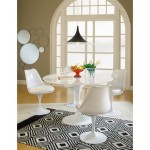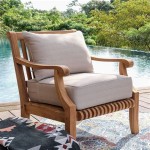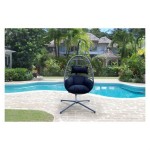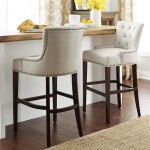Relaxing Chairs for Small Spaces: Maximizing Comfort Without Sacrificing Square Footage
In contemporary living, particularly in urban contexts, residential spaces are often characterized by their compact dimensions. As a result, furnishing these areas presents a distinct set of challenges. Residents seek furniture that not only fulfills its functional purpose but also complements the limited available space without compromising aesthetic appeal or sacrificing comfort. Relaxing chairs, essential for unwinding and rejuvenation, require careful consideration when selecting options suitable for smaller living areas. This article explores the diverse range of relaxing chairs designed specifically for small spaces, highlighting key features, ergonomic considerations, and design strategies to optimize both comfort and space utilization.
Selecting the appropriate relaxing chair for a small space necessitates a thorough assessment of factors beyond mere aesthetic preference. Room dimensions, existing furniture layout, and intended usage patterns must be carefully evaluated to ensure seamless integration and prevent a sense of overcrowding. Prioritizing compact designs, multi-functional features, and strategic placement can significantly enhance the overall ambiance and functionality of the space. Furthermore, understanding the ergonomic principles that underpin comfortable seating is crucial in mitigating potential discomfort and promoting relaxation, even within a constrained environment. This involves evaluating factors such as seat height, back support, and armrest positioning to ensure optimal postural alignment.
Compact Design and Space-Saving Features
One of the primary considerations when selecting a relaxing chair for a small space is its overall footprint. Chairs with a streamlined profile, minimal armrests, and a narrow base are inherently more space-efficient compared to bulky, oversized models. Armless chairs, for instance, offer a particularly compact option, allowing for seamless integration into tight corners or alongside other furniture pieces. Furthermore, chairs with a high back and a slender frame can create an illusion of height, visually expanding the perceived dimensions of the room. Folding chairs, while often associated with temporary seating, can also serve as a viable option for small spaces, offering the flexibility to be easily stowed away when not in use.
Multi-functional designs further enhance the space-saving potential of relaxing chairs. Consider chairs that incorporate built-in storage compartments, such as ottomans with hinged lids or chairs with integrated bookshelves. These features not only provide a comfortable seating experience but also offer practical solutions for decluttering and organizing the living area. Similarly, convertible chairs that transform into daybeds or loungers can serve as dual-purpose furniture, providing both seating and sleeping accommodations in a single unit. This adaptability is particularly beneficial in studio apartments or guest rooms where maximizing space is paramount.
Another space-saving strategy involves the strategic placement of the relaxing chair. Corner placement, for example, can effectively utilize otherwise underutilized space, creating a cozy reading nook or relaxation zone. Alternatively, positioning the chair against a wall or beneath a window can minimize its visual impact and maintain a sense of openness within the room. Avoid placing the chair in high-traffic areas or obstructing walkways, as this can disrupt the flow of movement and create a cluttered appearance. Consider the existing furniture layout and ensure that the chair complements the overall arrangement, rather than competing for visual attention.
In addition to the physical dimensions of the chair, the choice of upholstery and color can also influence its perceived size. Light-colored fabrics and minimalist designs tend to create a sense of airiness and openness, while darker colors and elaborate patterns can visually weigh down the space. Opting for a neutral color palette that complements the existing décor can create a cohesive and harmonious aesthetic. Consider using patterned cushions or throws to add visual interest without overwhelming the overall design. Ultimately, the goal is to select a chair that seamlessly integrates into the existing environment, both in terms of size and style.
Ergonomic Considerations and Comfort Prioritization
While space-saving is a crucial consideration when selecting a relaxing chair for a small space, it should not come at the expense of ergonomic comfort. A chair that is aesthetically pleasing but ergonomically deficient will ultimately fail to provide the desired relaxation and rejuvenation. Therefore, it is essential to prioritize chairs that offer adequate lumbar support, adjustable features, and breathable upholstery. Seat height is a critical factor, as it directly impacts leg posture and spinal alignment. The ideal seat height should allow the user to place their feet flat on the floor with their knees bent at a 90-degree angle. If the seat is too high, it can cause pressure behind the knees, while a seat that is too low can strain the back and hips. Consider chairs with adjustable seat heights to accommodate individuals of varying sizes.
Lumbar support is equally important in maintaining proper spinal alignment and preventing back pain. Look for chairs with a curved backrest that conforms to the natural curvature of the spine, providing adequate support to the lower back region. Some chairs also feature adjustable lumbar support mechanisms, allowing users to customize the level of support to their individual needs. Adequate back support is crucial for minimizing strain on the back muscles and promoting a comfortable seated posture, especially during prolonged periods of relaxation.
Armrests play a significant role in supporting the arms and shoulders, reducing muscle tension and promoting a relaxed posture. The ideal armrest height should allow the user to rest their arms comfortably at their sides without causing shoulder elevation or slouching. Some chairs feature adjustable armrests, allowing users to customize the height and width to their individual preferences. Armless chairs, while space-efficient, may not provide adequate support for the arms and shoulders, potentially leading to discomfort over time. Consider the intended usage patterns and prioritize armrests if the chair will be used for activities such as reading or watching television.
The choice of upholstery material also impacts overall comfort. Breathable fabrics, such as cotton, linen, or mesh, promote air circulation and prevent overheating, especially during warmer months. Leather upholstery, while aesthetically appealing, can become hot and sticky over time, potentially compromising comfort. Consider the climate and the intended usage patterns when selecting the upholstery material. High-quality cushioning and padding are essential for providing adequate support and preventing pressure points. Look for chairs with high-density foam or memory foam cushioning that conforms to the body's contours and distributes weight evenly.
Design Strategies for Maximizing Visual Space
Beyond the physical dimensions of the chair, strategic design choices can significantly influence the perceived size of a small space. Opting for chairs with a minimalist design aesthetic, characterized by clean lines and a lack of ornamentation, can create a sense of airiness and openness. Avoid chairs with excessive embellishments or bulky features, as these can visually clutter the space. Transparency is another effective design strategy for maximizing visual space. Chairs with open backs or transparent materials, such as acrylic or mesh, allow light to pass through, creating a sense of depth and openness. These designs minimize visual obstruction, making the room feel larger and more inviting.
The color palette also plays a crucial role in influencing the perceived size of a space. Light-colored chairs tend to reflect light, creating a sense of brightness and openness. White, beige, and pastel shades are particularly effective at visually expanding a small room. Conversely, dark-colored chairs can absorb light, making the space feel smaller and more enclosed. If opting for a darker color, consider using it sparingly as an accent color or pairing it with lighter shades to create a balanced aesthetic. Monochromatic color schemes, where different shades of the same color are used throughout the room, can also create a sense of harmony and visual continuity.
The scale of the chair in relation to the other furniture pieces in the room is also an important consideration. Avoid selecting a chair that is disproportionately large compared to the other items, as this can create a sense of imbalance and overcrowding. Instead, opt for a chair that complements the scale of the existing furniture, creating a cohesive and harmonious aesthetic. Consider using mirrors strategically to reflect light and visually expand the space. Placing a mirror behind the relaxing chair can create an illusion of depth, making the room feel larger and more open. Avoid placing mirrors directly opposite the chair, as this can be distracting and create a sense of unease.
Finally, decluttering the surrounding area is essential for maximizing visual space. Remove any unnecessary items from the vicinity of the relaxing chair, such as stacks of books, magazines, or decorative objects. A clean and uncluttered environment promotes a sense of calm and relaxation, while also enhancing the perceived spaciousness of the room. Consider using storage solutions, such as baskets or shelves, to organize and conceal clutter. The goal is to create a serene and inviting space where one can relax and unwind without feeling overwhelmed by visual distractions. By carefully considering these design strategies, it is possible to transform even the smallest of spaces into a comfortable and visually appealing oasis.

The Best Compact Lounge Chairs For Small Spaces Or Bedrooms Seattle Times

Homestock Pushback Recliner Chairs For Small Spaces With Adjustable Footrest Gray Microfiber 34067hd

Landon Recliner Chair Set Of 2 By Naomi Home Color Cream Fabric Linen

Maykoosh Pushback Recliner Chairs For Small Spaces With Adjustable Footrest Mocha Linen 34069mk The Home

Wood Outdoor Power Recliner Chair With Gray Cushions Wall Hugger Electric For Small Spaces

Landon Recliner Chair Set Of 2 By Naomi Home Color Cream Fabric Linen

28 Best Recliners To Kick Back And Relax In 2025

Beckett Small Spaces Power Recliner Performance Gingham Taupe

Muzz Chaise Lounge Indoor Modern Velvet Fabric Chair And Sleeper Sofa For Living Room Small Space Light Grey

The Best Compact Lounge Chairs For Small Spaces Or Bedrooms Seattle Times








